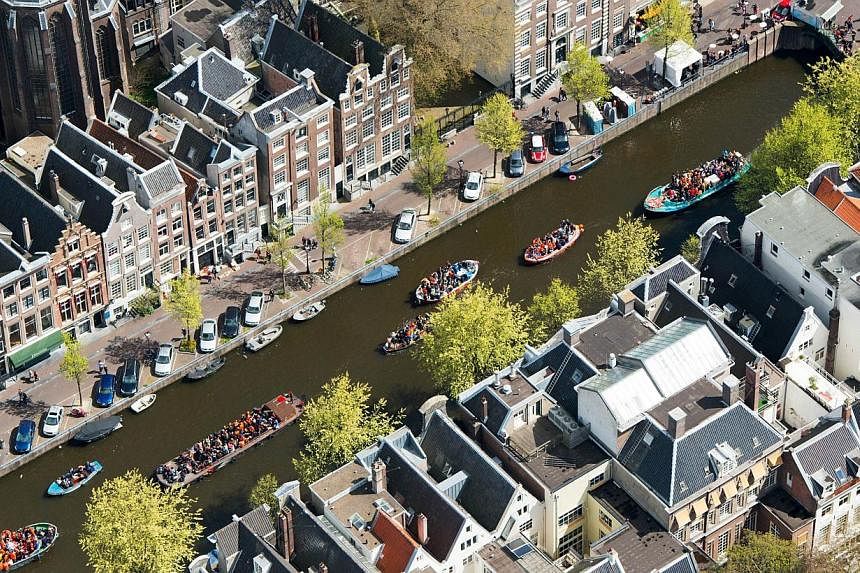THE HAGUE (AFP) - A Dutch startup has unveiled plans to build the world's first 3D-printed bridge across an Amsterdam canal, a technique that could become standard on future construction sites.
Using robotic printers "that can 'draw' steel structures in 3D, we will print a (pedestrian) bridge over water in the centre of Amsterdam," engineering startup company MX3D said in a statement, hoping to kick off the project by September.
The plan involves robotic arm printers 'walking' across the canal as it slides along the bridge's edges, essentially printing its own support structure out of thin air as it moves along.
Specially-designed robotic arms heat the metal to a searing 1,500 deg C to painstakingly weld the structure drop-by-drop, using a computer programme to plot the sophisticated design.
"The underlying principle is very simple. We have connected an advanced welding machine to an industrial robot arm," said the bridge's designer Joris Laarman.
"We now use our own intelligent software to operate these machines so they can print very complex metal shapes which can differ each time," Laarman said of the project also involving the Heijmans construction company and Autodesk software.
So far, the robotic arm has been used to print smaller metal structures, but the bridge will be the first ever large-scale deployment of the technology, MX3D spokeswoman Eva James told AFP.
It is hoped that the bridge will be a first step towards seeing the technique used on construction sites, especially those involving dangerous tasks such as on high buildings, she said.
The technique also removes the need for scaffolding as the robot arms use the very structure they print as support.
The designers are now in talks with the Amsterdam city council to find a site for the project which they hope will be completed by mid-2017.
"I strongly believe in the future of digital manufacturing and local production," said Laarman.
"It's a new form of craftsmanship."
"This bridge can show how 3D printing has finally entered the world of large-scale functional objects and sustainable materials," he said.
Amsterdam city council spokeswoman Charlene Verweij told AFP the Dutch capital was supporting the project.
"We are still in negotiations as to where exactly the bridge will be built," she said.


